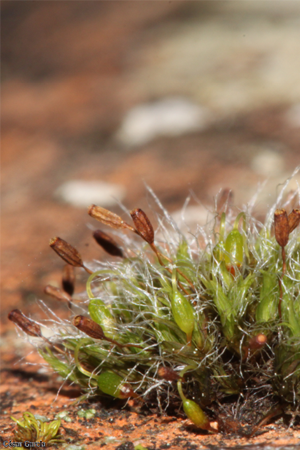
|
 |
Bryophytes are small plants that do not have flowers or seeds and, generally, lack structures for the transport of water and nutrients. Due to their small size, the use of a portable magnifying glass reveals a surprising world of shapes and tones. There are three major groups of bryophytes: liverworts, hornworts and mosses. Two of the most common growth forms are: acrocarpous mosses grow as small tuffs, whilst pleurocapous mosses grow as carpets. They are composed of leaves, rhizoids ("roots") and capsules (which produce spores); furthermore they are poikilohydric, meaning their water content varies with that of the atmosphere. Aquatic bryophytes exist, however they are not very common in the Alentejo. In this region the dominant species are those that tolerate long periods without water and ephemeral bryophytes that disappear in the dry season. Besides some moist habitats, such as margins of streams and temporary ponds, bryophytes colonize tree trunks, branches, rocks, soil, and even artificial structures, such as walls and roofs. They are excellent ecological indicators of the conservation status of habitats, as some species disappear with minimal disturbance, while others resist through different adaptation strategies. |

|